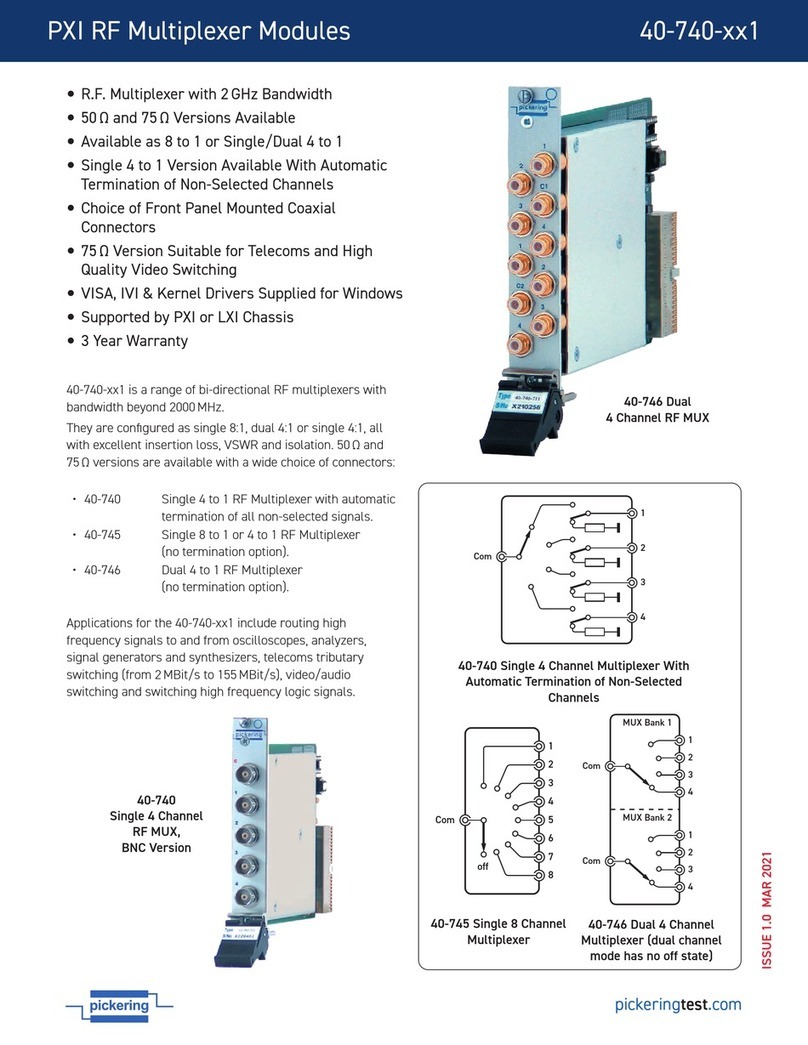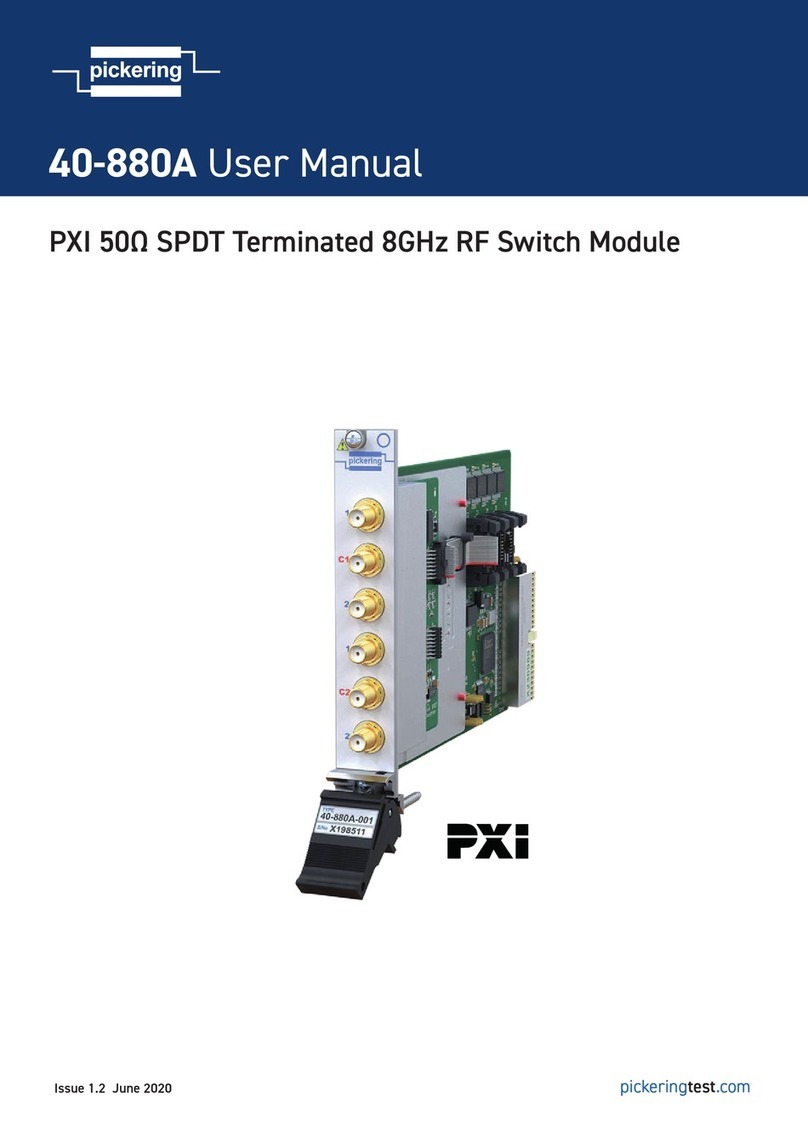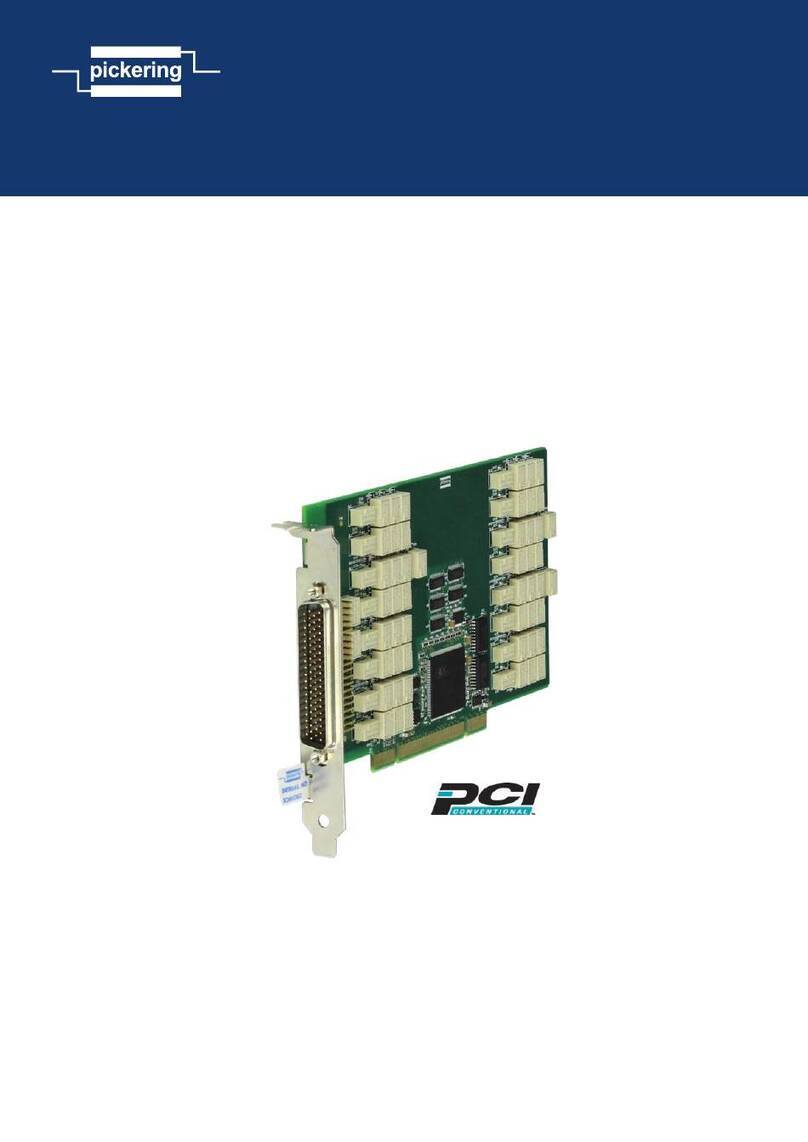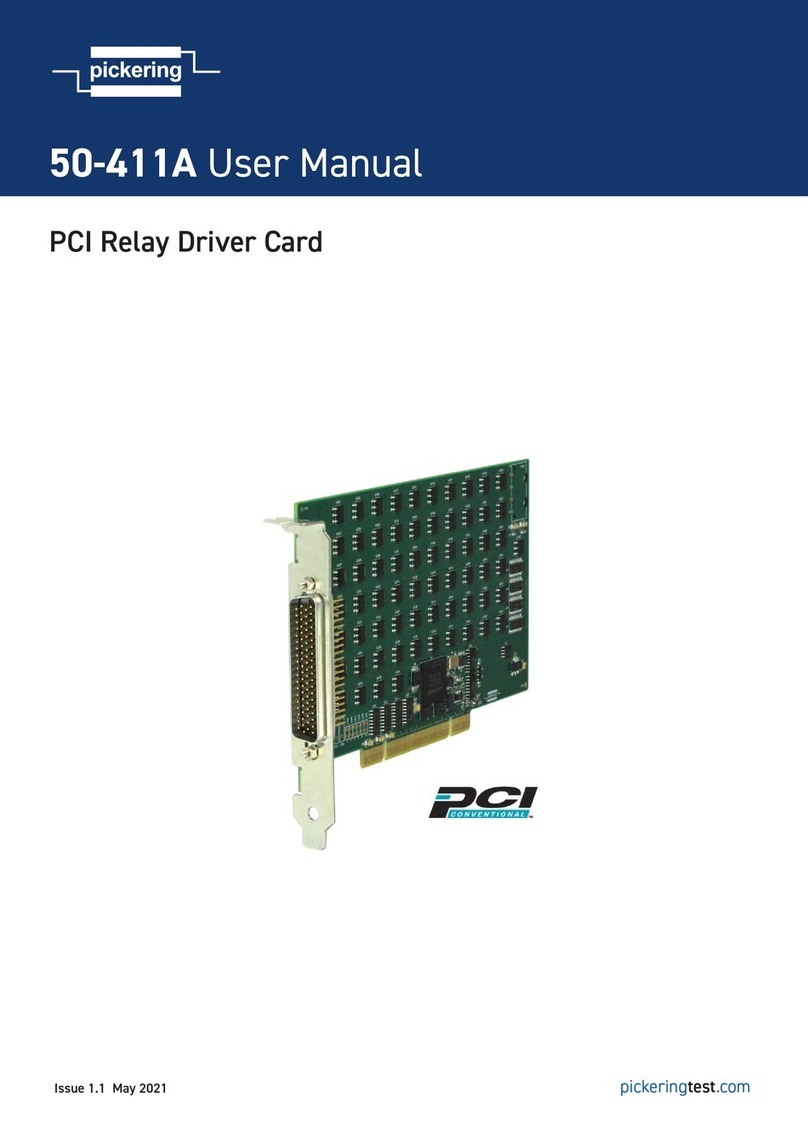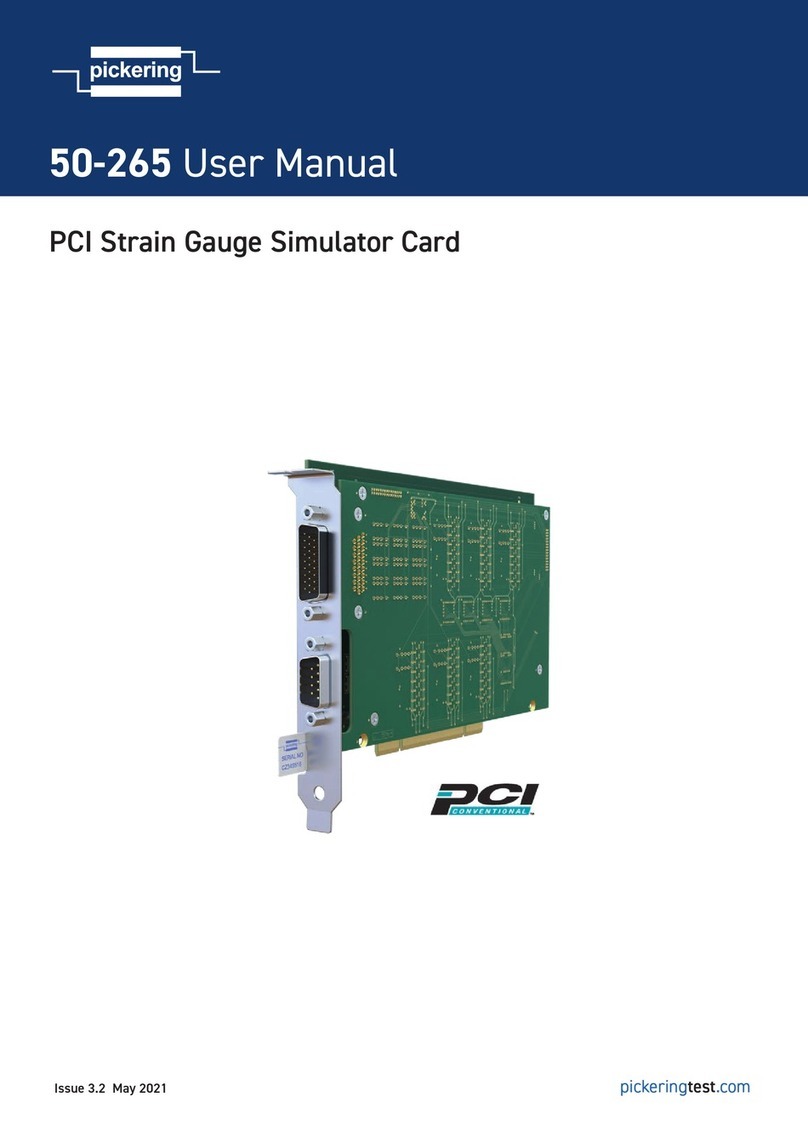
Page 1.3 pickeringtest.com
Section 1 - Technical Specification
Product Order Codes
32 x SPDT, Ruthenium Reed Relays
64 x SPDT, Ruthenium Reed Relays
50-110A-021
50-110A-121
32 x SPST, Ruthenium Reed Relays
64 x SPST, Ruthenium Reed Relays
25 x DPST, Ruthenium Reed Relays
50 x DPST, Ruthenium Reed Relays
50-115A-021
50-115A-121
50-115A-022
50-115A-122
Product Customization
Pickering PCI cards are designed and manufactured on our
own flexible manufacturing lines, giving complete product
control and enabling simple customization to meet very
specific requirements.
Customization can include:
• Alternative reed relay types
• Mixture of reed relay types
• Alternative number of relays
• Different performance specifications
All customized products are given a unique part number, fully
documented and may be ordered at any time in the future.
Please contact your local sales office to discuss.
Support Products
eBIRST
Switching System Test Tool
This product is supported by the eBIRST test tools which
simplify the identification of failed relays, the required
eBIRST tools are below. For more information go to:
pickeringtest.com/ebirst
Product Test Tool Adaptor
50-110A/115A 93-002-001 Not Required
Spare Relay Kits
Kits of replacement relays are available for the majority of
Pickering’s PXI switching products, simplifying servicing and
reducing down-time.
Product Relay Kit
50-110A-021/121
50-115A-021/121
50-115A-022/122
91-100-026
91-100-048
91-100-062
For further assistance, please contact your local Pickering
sales office.
Mating Connectors & Cabling
For connection accessories for the 50-110A/115A range
please refer to the 90-002D 200-pin LFH Connector
Accessories data sheet where a complete list and
documentation can be found for accessories, or refer to the
Connection Solutions catalog.
Pickering can supply mating 200-pin connectors and cable
assemblies to enable easy integration of the 50-110A &
50-115A series of relay cards
50-110A/115A
pickeringtest.com Page 3
Ordering Information







